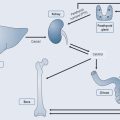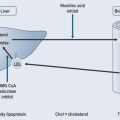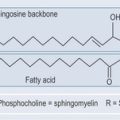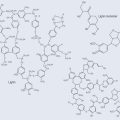Chapter 20 Introduction to plant pharmacology
Secondary metabolites
Two systems are at work in plants:
• Primary metabolism: principally, products of photosynthesis, which provide the food that enables the plant to live, grow and reproduce. Primary metabolites are thus necessary to keep the plant healthy and alive. They comprise the sugars, lipids, amino acids and nucleotides that are used to produce the polymers essential for the plant’s structure and metabolism and that are part of our normal diet.
• Secondary metabolism: very diverse, and thought to provide a secondary function for the plant such as protection against animals that might eat it or against bacteria, viruses, fungi or parasites. For example, some plants produce cyanogenic glycosides (see Chapter 24 ‘Glycosides’, p. 181), which are made when sugars link to highly toxic cyanide. These are released when the plant is attacked by an insect or disease-causing organism. Whatever the reason for secondary metabolites, they are extremely useful as medicines, food, flavourings, colourings, perfumes, aromatherapy oils and dyes.
Based on the principle ‘structure dictates function’, being able to recognize structure goes a long way to being able to make an educated guess as to what function the compound performs. Many secondary metabolites originate from a similar compound, which is transformed at the last minute by an alternative pathway, for example, shikimic acid is the starting point for phenol-based compounds (see Figures 21.1 and 21.2, pp. 149 and 150).







